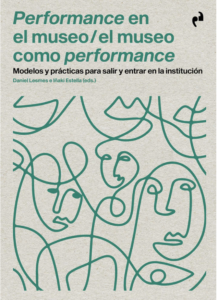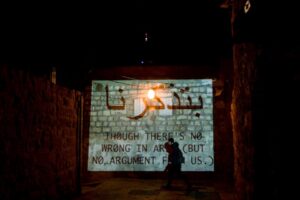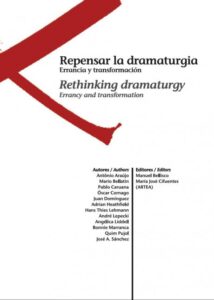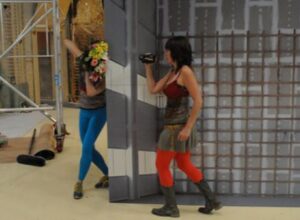Conocemos la historia del Jemer Rojo y la atrocidad de los campos de la muerte en Camboya. Pero ¿cómo situarse frente una persona que sufrió la tortura y sobrevivió a la muerte? ¿Cómo situarse cuando además esa persona no se exhibe sólo en su dolor, sino en su trabajo de ficción, en su convertirse habitual en imagen-movimiento, en cuerpo-movimiento, en espectáculo?
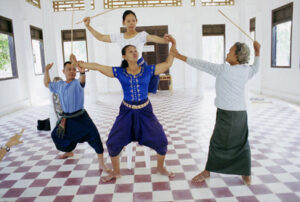
Hay diversos elementos en el dispositivo escénico que rompen la espectacularidad. El primero es el vídeo doméstico en color, de baja calidad: no hay pretensión artística en esos vídeos, son materiales de trabajo brutos. Esto puede molestar estéticamente, pero refuerza la percepción de la pieza desde el punto del vista de la vivencia. Duda: ¿no reduce el placer que para la propia intérprete supone estar en el escenario? Pero no se trata de hacer un espectáculo con el material de la propia vida, el espectáculo está fuera, está indicado, en otro lugar. Ahora se trata de mostrar.
La segunda ruptura documental está en la intervención del director, que explica que la protagonista es uno de los últimos archivos vivos de la danza palaciega camboyana.
La única danza que se muestra en formato espectacular ocurre al final de la pieza, y se la muestra con luz de baja intensidad, como si fuera ejecutada en la vitrina de un museo.
En cambio, el principio de la pieza es directo: los tres intérpretes, enfrentados a las cámaras que recogen sus primeros planos, relatan su experiencia terrible en los campos. El uso de la cámara permite la distancia, permite evitar la mirada directa: los actores no hablan al público individualmente, no miran a los ojos del espectador, miran a la cámara. Así se evita la emoción, se evita el sentimentalismo que haría imposible la continuidad.
Los tres primeros testimonios son los de los bailarines jóvenes. La maestra aparece después. Es ella el archivo viviente. Ella persiste en enseñar, en corregir. En un momento dado, asegura que su hija (quizá 50 años) tiene aún mucho que aprender. Ésta perdió a su marido y a su hija en el campo. Toda su vida desde entonces ha consistido en una tentativa de recuperar lo perdido. Pero su madre se preocupa de que baile. La madre identifica su vida con la danza, añora el palacio. Bailar es volver a su casa, al palacio. Y probablemente así se siente en el escenario.
Según el director, el proceso de construcción del espectáculo fue un proceso de sanación. Los actores pueden reír, pueden disfrutar en el escenario haciendo aquello que les gusta: danzar. Antes pasan por el relato de las dolorosas experiencias. ¿Los vemos como artistas o como víctimas? Imposible separar ambas condiciones. Pero ¿acaso no es el presente lo que ahora importa? El presente está cargado de ambas condiciones, no podemos liberarnos de ellas. Pero sí podemos tratar de situarnos en el aquí y el ahora, en nuestra condición de personas capaces de hablar, capaces de comunicar con los otros, intercambiando experiencias, traduciendo vidas.
José A. Sánchez
Estambul, 2009

Este texto está bajo una licencia de Creative Commons Reconocimiento-NoComercial-SinObraDerivada 3.0 España

